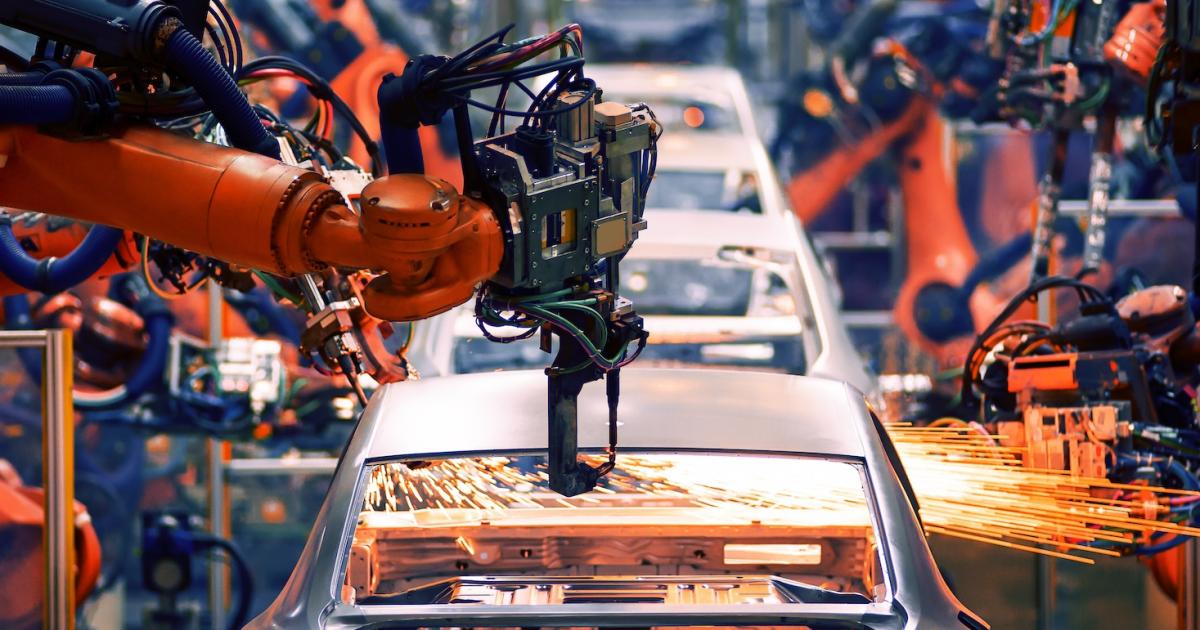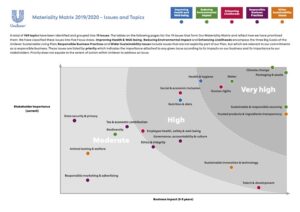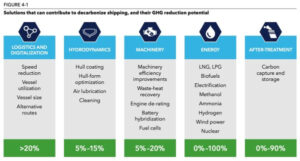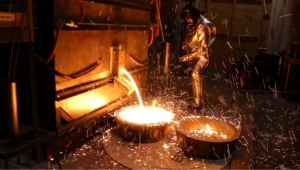
As federal incentives spur a wave of new domestic clean energy manufacturing, economic boosters in Ohio and neighboring states see an opportunity to "Make it in Appalachia."
A virtual summit this month will serve as part of public kickoff efforts to identify and support small and medium manufacturers in the region so they can play a role in the growing clean energy economy.
The New Energy Economy project is being funded by a $10 million federal grant awarded this fall. Lead applicant Catalyst Connection and 10 other partners have been working over the past two months to finalize subcontracts for the effort, which encompasses 156 counties in Ohio, Pennsylvania, West Virginia, Maryland and New York.
"By supporting small-to-medium manufacturers and providing training and resources, we can drive economic transformation, create in-demand jobs, and build a brighter future for Appalachian communities," said Steve Herzenberg, co-director of ReImagine Appalachia, one of the grant partners.
ReImagine Appalachia hosted its virtual strategy summit Jan. 16 and 17. The first day focused on how to turn the Ohio River Valley into a sustainable manufacturing hub, with discussions the next day focused on community rebuilding and workforce development under federal climate infrastructure programs.
We want to identify and support companies that want to participate in a new clean energy supply chain or improve their factory in energy efficiency.
The Appalachian Regional Commission is providing funding for the grant under the federal Bipartisan Infrastructure Law as part of its Appalachian Regional Initiative for Stronger Economies. ARISE supports multi-state projects to drive large-scale regional economic change.
The New Energy Economy project will provide training, technical assistance, supply chain mapping and guidance for factory and product upgrades to more than 1,000 small to medium-sized manufacturers over four years in sectors that include renewable energy, hydrogen, smart grid, green buildings and electric vehicles.
"We want to identify and support companies that want to participate in a new clean energy supply chain or improve their factory in energy efficiency," said Petra Mitchell, president and CEO at Catalyst Connection, based in Pittsburgh. Although much of Appalachia is rural, the region includes many towns and cities.
Mitchell said a wide range of businesses could benefit in different sectors. Planned hydrogen hubs, for example, will need lots of metal products and meters, she said. So companies making such things may want to think about how they could adapt existing products or develop new ones to serve that sector.
Similarly, lots of pieces and parts go into wind turbines, said Amanda Woodrum, another co-director of ReImagine Appalachia. "They’re made of things that we make already, like gearboxes and bearings." The grant project can help identify companies that might be a good fit for making those things and provide technical know-how so they can gear up to expand.
Yet there are barriers to getting into new markets.
"Across the region, many small and medium-sized manufacturers lack the capabilities to participate in the supply chains for green energy production or green products manufacturing,” said Janiene Bohannon, communications director for the Appalachian Regional Commission. "Appalachian manufacturers and energy providers seeking to pivot to greener models face difficulties in post-COVID supply chain disruptions, labor shortages, increasingly dated facilities and technology, and lack of availability of training in said technology."
Opportunity to move ahead
Large manufacturers often have staff or can afford consultants to grow their businesses and navigate entry into new market sectors.
"Small companies rarely do this," said Ethan Karp, president and CEO of MAGNET in Cleveland.
The nonprofit will be responsible for providing roughly $1 million in services to companies in Ohio counties covered by the grant. Other manufacturing extension partners will work with companies in the four other states covered by the grant.
More than half of the 32 Ohio counties rank among the 25 percent most economically depressed counties nationwide. Only two are "competitive" under the commission’s designation system.
"We can really make a difference there," Karp said. "We’re going to retain a ton of jobs, and we’re going to strengthen the output and grow our communities."
With the right sustainable strategy and the right investments, we can actually turn the region into leaders in the new energy economy.
Work in the manufacturing sector generally pays better than low-wage jobs that have employed many people in Appalachia after other manufacturing jobs left the area and the coal industry declined over the past several decades. A significant number of people in Appalachia have also become disconnected from the workforce, Woodrum said.
Now, across the five states included in the grant, the project is expected to serve 1,100 businesses, create 5,500 jobs, retain 15,190 jobs and provide $44 million worth of cost cuts, Bohanon said.
"We already have a presence in these counties," Karp said, adding that MAGNET has already done some work helping manufacturers find opportunities for energy efficiency. MAGNET provides its educational and consulting services free of charge. Companies then invest in projects that can save money or otherwise boost their profit margins.
Lots more outreach about the grant program will follow after the upcoming strategy session for ReImagine Appalachia. Among other things, that outreach will help companies in the region think about whether they can play a role in the clean energy supply chain, even if that role isn’t initially obvious.
"It doesn’t have to necessarily be high-tech stuff," Karp said, adding that a lot of the shift will be market driven. So, as more electric vehicles come on the market, companies will want to think about how they can be part of that growth. Or, as there’s more electrification, manufacturers may want to think about products they could supply. And then companies will need more training and technical help to expand their businesses through capital investments, any workforce issues and more.
"With the right sustainable strategy and the right investments, we can actually turn the region into leaders in the new energy economy," Woodrum said. "The kind of manufacturing and the jobs that it creates are a big important piece of that puzzle."
Historically, "Appalachia’s been one of the most likely places for innovation," said Rick Stockburger, president and CEO of BRITE Energy Innovators, based in Warren, Ohio, which is not part of the Catalyst Connection grant project. "There’s no structural reason why it can’t be again, especially as we’re thinking about this new economy and how we make sure everybody can participate in it."
- SEO Powered Content & PR Distribution. Get Amplified Today.
- PlatoData.Network Vertical Generative Ai. Empower Yourself. Access Here.
- PlatoAiStream. Web3 Intelligence. Knowledge Amplified. Access Here.
- PlatoESG. Carbon, CleanTech, Energy, Environment, Solar, Waste Management. Access Here.
- PlatoHealth. Biotech and Clinical Trials Intelligence. Access Here.
- Source: https://www.greenbiz.com/article/grant-seeks-recruit-appalachian-manufacturers-clean-energy-economy
- :has
- :is
- :not
- $1 million
- $10 million
- $UP
- 000
- 1
- 10
- 100
- 15%
- 16
- 17
- 25
- 32
- 500
- 7
- a
- About
- across
- actually
- adapt
- adding
- After
- again
- already
- also
- Although
- among
- an
- and
- Another
- any
- Appalachian
- Arc
- ARE
- AREA
- arise
- AS
- Assistance
- At
- availability
- awarded
- barriers
- based
- BE
- become
- been
- being
- benefit
- Better
- Big
- bipartisan
- boost
- BOOSTERS
- brighter
- build
- businesses
- by
- CAN
- capabilities
- capital
- Catalyst
- ceo
- chain
- chains
- change
- charge
- Cities
- clean
- clean energy
- cleveland
- Climate
- Coal
- come
- commission
- Communications
- Communities
- community
- Companies
- competitive
- connection
- consultants
- consulting
- Cost
- could
- covered
- create
- creates
- cuts
- dated
- day
- decades
- designation
- develop
- Development
- difference
- different
- difficulties
- Director
- disconnected
- discussions
- disruptions
- do
- Doesn’t
- Domestic
- done
- drive
- driven
- Economic
- economies
- economy
- educational
- efficiency
- effort
- efforts
- Electric
- electric vehicles
- electrification
- employed
- encompasses
- energy
- energy efficiency
- entry
- especially
- ethan
- Ether (ETH)
- Even
- everybody
- example
- existing
- Expand
- expected
- extension
- Face
- facilities
- factory
- Fall
- Federal
- finalize
- Find
- First
- fit
- five
- focused
- follow
- For
- four
- Free
- from
- funded
- funding
- future
- Gear
- generally
- getting
- Go
- going
- good
- grant
- Green
- green energy
- greener
- Grid
- Grow
- Growing
- Growth
- guidance
- Have
- help
- helping
- hosted
- How
- How To
- HTTPS
- Hub
- hydrogen
- identify
- if
- important
- improve
- in
- Incentives
- include
- included
- includes
- increasingly
- industry
- Infrastructure
- initially
- Initiative
- Innovation
- innovators
- into
- Invest
- Investments
- issues
- IT
- ITS
- Jan
- Jobs
- kickoff
- Kind
- labor
- Lack
- large-scale
- Law
- lead
- leaders
- left
- like
- likely
- Lot
- lots
- made
- make
- Making
- Manufacturers
- manufacturing
- Manufacturing sector
- many
- many people
- mapping
- margins
- Market
- Markets
- Maryland
- May..
- medium
- metal
- might
- million
- million worth
- models
- money
- Month
- months
- more
- most
- move
- much
- multi-state
- Nationwide
- Navigate
- necessarily
- Need
- neighboring
- New
- New Market
- New York
- next
- no
- Nonprofit
- number
- obvious
- of
- often
- Ohio
- on
- ONE
- ones
- only
- opportunities
- Opportunity
- or
- Other
- otherwise
- our
- output
- outreach
- over
- part
- participate
- partners
- parts
- past
- pays
- Pennsylvania
- People
- piece
- pieces
- pittsburgh
- Pivot
- Places
- planned
- plato
- Plato Data Intelligence
- PlatoData
- Play
- presence
- president
- Product
- Production
- Products
- Profit
- Program
- Programs
- project
- projects
- provide
- providers
- provides
- providing
- public
- puzzle
- range
- rank
- rarely
- really
- reason
- rebuilding
- recruit
- region
- regional
- Renewable
- renewable energy
- Resources
- responsible
- retain
- right
- River
- Role
- roughly
- Rural
- Said
- Save
- sector
- Sectors
- see
- seeking
- Seeks
- serve
- Services
- session
- several
- she
- shift
- shortages
- significant
- small
- smart
- So
- some
- Staff
- States
- Steve
- Strategy
- Strengthen
- stronger
- structural
- such
- Summit
- supply
- supply chain
- Supply chains
- support
- Supporting
- Supports
- sure
- sustainable
- system
- Technical
- Technology
- than
- that
- The
- The Area
- their
- then
- There.
- These
- they
- things
- think
- Thinking
- this
- those
- Through
- to
- Ton
- towns
- Training
- Transformation
- TURN
- two
- under
- upcoming
- upgrades
- Valley
- Vehicles
- virginia
- Virtual
- virtual summit
- want
- warren
- Wave
- we
- West
- West Virginia
- whether
- which
- why
- wide
- Wide range
- will
- wind
- with
- Work
- Workforce
- Workforce Development
- working
- worth
- years
- york
- zephyrnet











